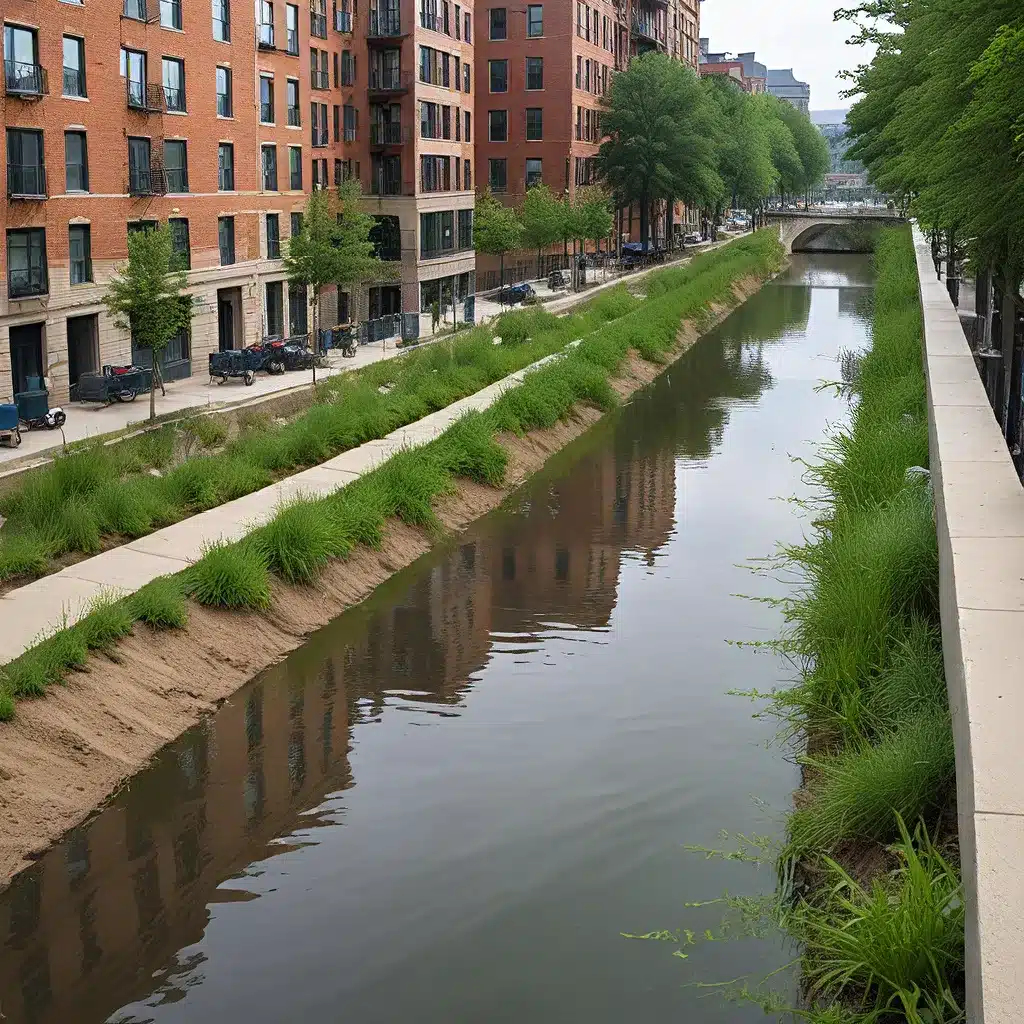
Have you ever looked out your window during a heavy downpour and wondered, “Where does all that water go?” Well, my friends, the answer to that question is a fascinating journey into the world of stormwater management – a realm that’s undergoing a remarkable transformation.
The Challenges of Traditional Stormwater Management
Traditionally, stormwater management has been a reactive process, with cities and towns struggling to keep up with the ever-increasing demand for more concrete and asphalt. As urban areas sprawl, the natural landscape is replaced by impervious surfaces that prevent rainwater from seeping into the ground. This leads to a dangerous buildup of water, often resulting in devastating floods that can wreak havoc on our communities.
Opti’s research highlights the growing threat of floods, noting that our planet is facing more of these extreme weather events than ever before. But what if we could see these floods as an opportunity instead of a problem? What if we could harness the power of nature to create a better future?
Embracing Nature-Based Solutions
That’s where nature-based solutions come into play. These innovative approaches to stormwater management aim to mimic the natural water cycle, using green infrastructure and natural landscapes to capture, slow down, and filter rainwater before it can cause chaos in our cities.
As this comprehensive guide on urban bioswales explains, these nature-based solutions are transforming cityscapes around the world. Bioswales, for example, are shallow, vegetated channels that collect and slow down stormwater runoff, allowing it to seep into the ground or be absorbed by plants. These living, breathing green spaces not only manage water but also provide a host of other benefits, from improving air quality to creating wildlife habitats.
But nature-based solutions go far beyond just bioswales. Wetlands, rain gardens, and even green roofs can all play a crucial role in creating a more resilient, flood-proof urban landscape. And the best part? These solutions often come with added bonuses, like enhancing biodiversity, reducing the urban heat island effect, and providing recreational spaces for the community to enjoy.
The Power of Smart Technology
Of course, integrating nature-based solutions into our cities is no small feat. That’s where the power of smart technology comes into the picture. As Opti’s research highlights, innovative tools like real-time monitoring and adaptive control systems can help us optimize the performance of our stormwater infrastructure, ensuring that these nature-based solutions are working at their full potential.
Imagine a future where sensors and AI-powered algorithms constantly monitor the flow of water, adjusting the release of stormwater in response to weather forecasts and rainfall patterns. This level of dynamic control can help us prevent floods, reduce the strain on our sewer systems, and even reuse captured rainwater for irrigation or other beneficial purposes.
The Ripple Effects of Revolutionized Stormwater Management
But the true power of revolutionized stormwater management goes beyond just flood mitigation. When we embrace nature-based solutions and smart technology, we unlock a world of possibilities that can transform our cities and communities in profound ways.
For starters, by reducing the risk of flooding, we can safeguard homes, businesses, and critical infrastructure, protecting lives and livelihoods. This not only enhances the overall resilience of our urban areas but also helps to boost the local economy, as businesses and residents feel more secure in their investments.
Moreover, the incorporation of green spaces and natural landscapes can have a significant impact on public health and well-being. Studies have shown that access to green spaces can improve mental health, reduce stress levels, and even encourage physical activity. Imagine a future where your daily commute includes a peaceful stroll through a lush, biodiverse stormwater garden – a far cry from the concrete canyons of the past.
And let’s not forget about the environmental benefits. By mimicking the natural water cycle, nature-based stormwater solutions can help to recharge groundwater supplies, reduce water pollution, and even support the overall health of local ecosystems. This is particularly crucial in areas like the Inland Waters region, where protecting the integrity of our waterways is of paramount importance.
Embracing the Future of Stormwater Management
As we look to the future, it’s clear that the way we manage stormwater is poised for a major transformation. By harnessing the power of nature-based solutions and smart technology, we can create a more resilient, sustainable, and livable urban landscape – one that’s prepared to weather the storms of a changing climate.
So, the next time you look out your window during a downpour, don’t just see a problem waiting to happen. See the opportunity to revolutionize the way we think about stormwater, and to build a better future for our communities. The journey may be challenging, but the rewards are sure to be transformative.


